Case Studies
Vibrant Oregon Downtowns presents case studies that explore solutions and success stories. The case studies provide inspiration from different cities and range from adaptive reuse, to safer streets, and housing opportunities. Learn more by exploring the specific case studies in the links below.
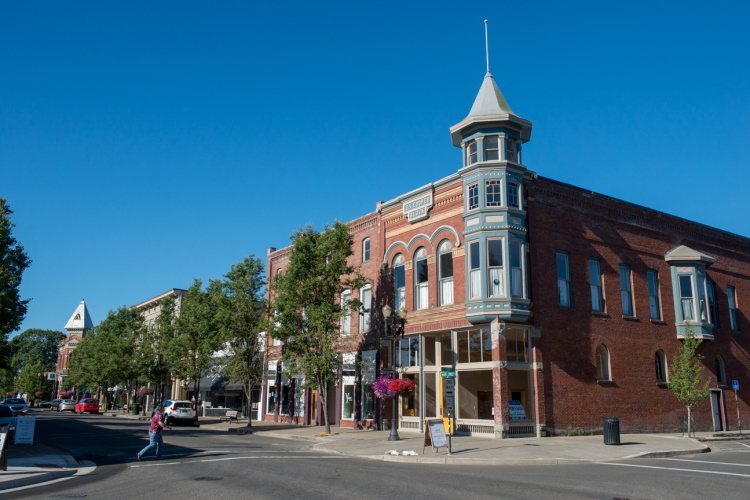
Independence has supported catalyst development projects and building improvements in the downtown area with targeted actions and programs. One of the most pivotal has been redevelopment of the Valley Concrete Site which was transformed into a boutique hotel and housing.
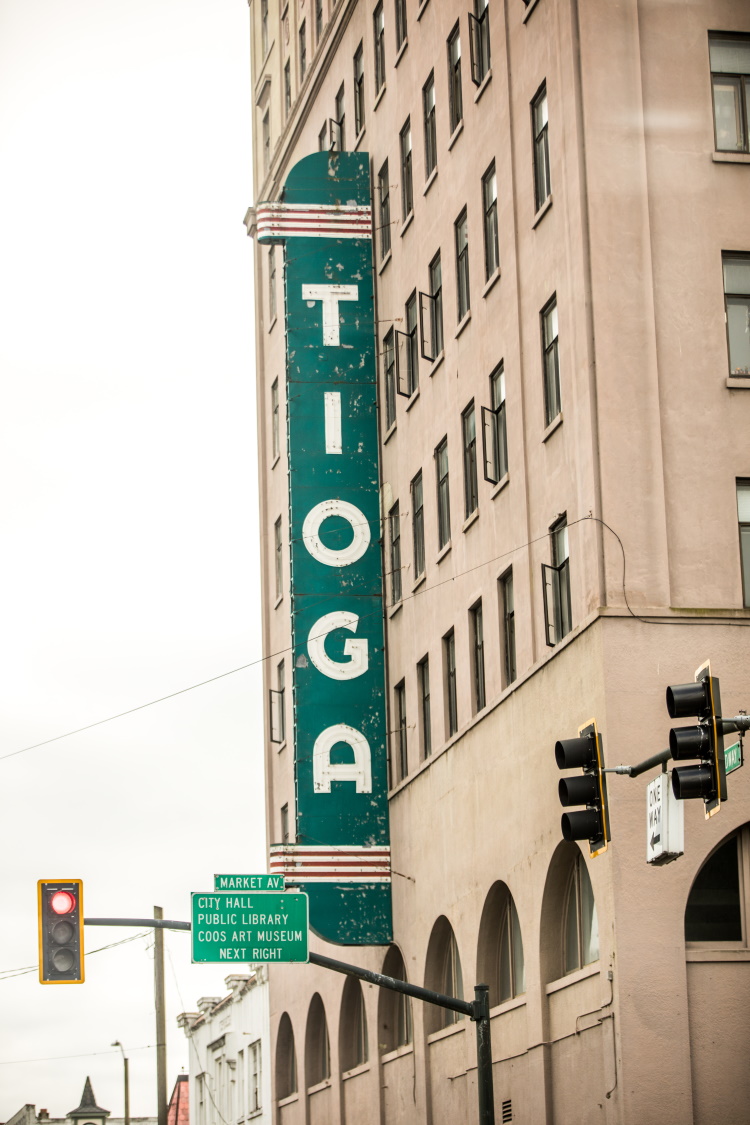
The Coos Bay Urban Renewal Agency helped support renovation of the historic Tioga Hotel, likely the tallest building on the Oregon Coast. Following completion, the owners plan to turn the 1920s-era building into 52 apartment units.
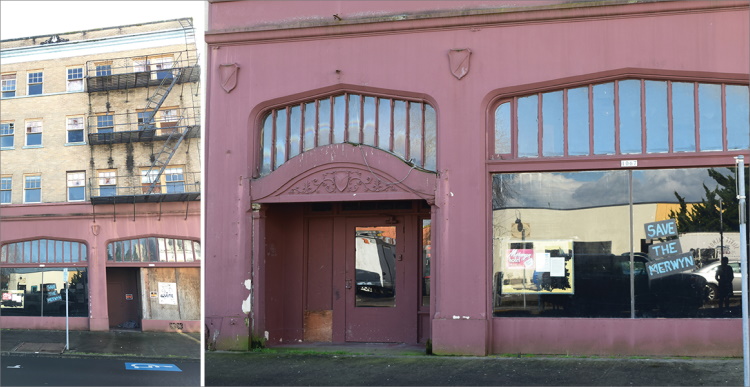
Affordable housing is in increasingly short supply in Oregon's coastal region, with rents skyrocketing in the past decade. The Merwyn Apartments in the city of Astoria is an affordable housing project that was once an old hotel. The renovated apartment complex offers 40 units, mostly studios set at low monthly rents, reserved for people and households on limited incomes.
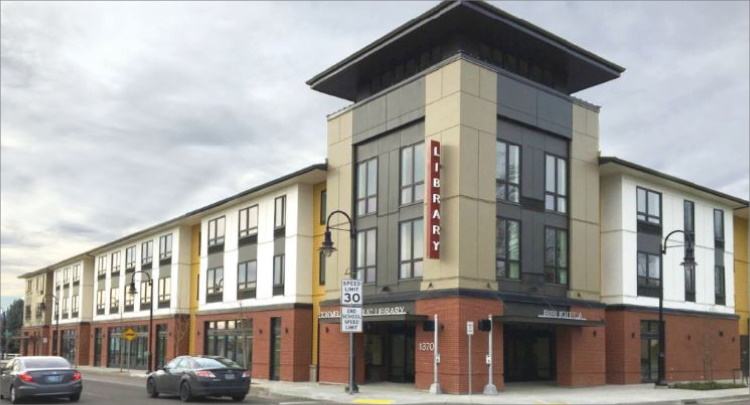
In Cornelius, a partnership between the city, a non-profit, and private developer resulted in Cornelius Place, a mixed-use development located near downtown city services and amenities. The residential component of Cornelius Place includes 45 new affordable apartments for seniors with household incomes of up to 50-60 percent of Area Median Income (AMI).
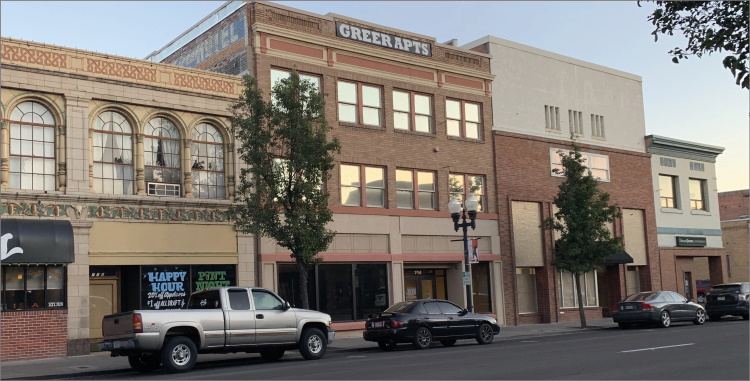
The City of Klamath Falls recognized the importance of activating upper floors in the downtown area, and connecting these spaces to residential uses. The city partnered with the Klamath Falls Downtown Association to pursue grants to fund apartment construction in downtown. The project highlights a range of benefits from additional housing, to amenities that attract people, to a stronger tax base.
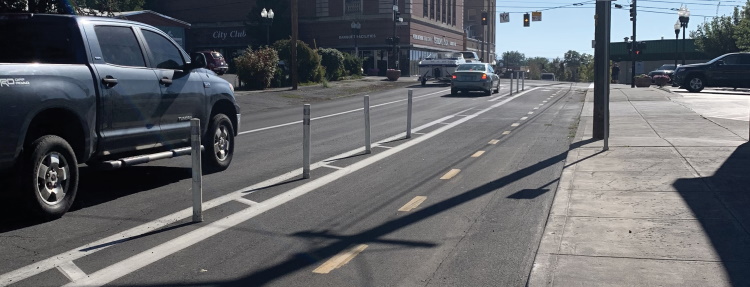
The City of Klamath Falls partnered with community members and the local medical center to identify strategies for improving community health, focusing on active transportation improvements in areas of the community with the greatest need. Along with improving access to active transportation options and improving community health, the project served to support the local economy and emerging downtown business district.
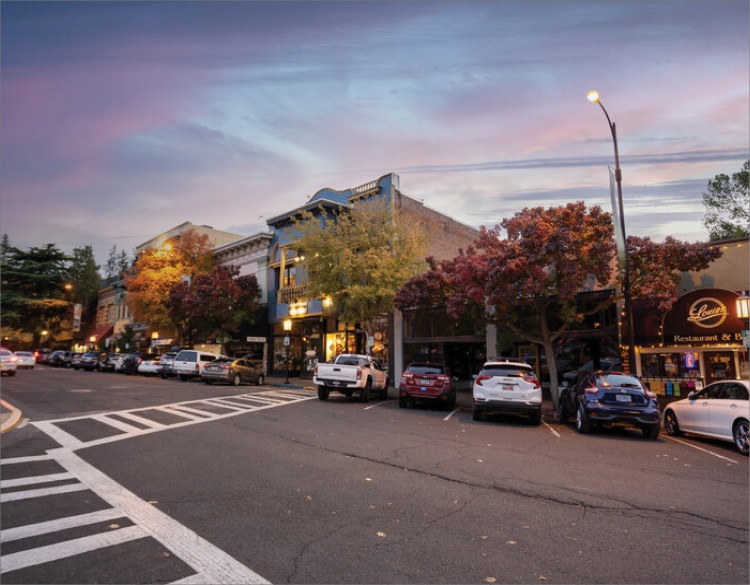
The City of Ashland conducted a pilot project to improve travel lanes on a busy street corridor. Due to the success of the temporary project, the city permanently transformed the street into the new configuration.
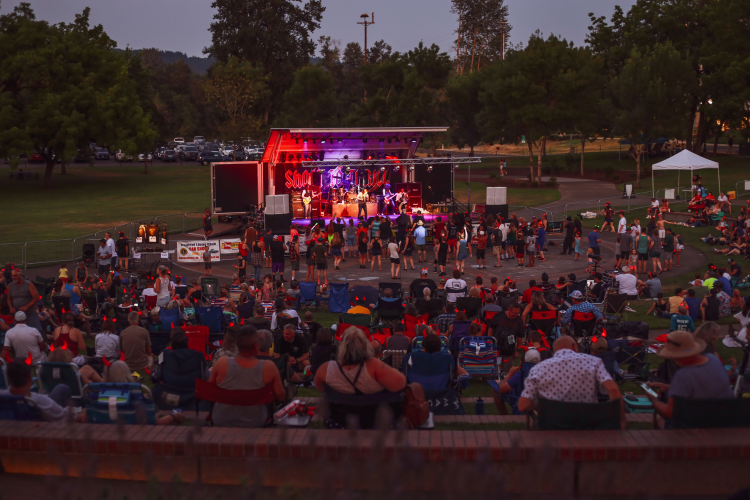
The City of Independence provides free movies and concerts throughout the summer in its recently completed outdoor amphitheater. Lawn seating, concessions, and restrooms with sanitizing stations are there to make a memorable experience for all.
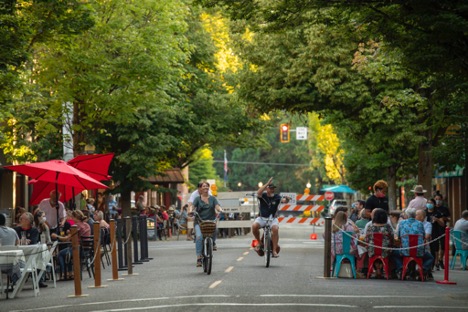
The City of McMinnville worked with local businesses along the city's main street to provide outside dining. The program developed out of necessity in 2020 as pandemic restrictions forced many restaurants to offer outdoor seating. The city made certain streets car-free on weekends to provide an attractive and safe environment for outdoor dining.
Introduction and User Guide
Small and mid-sized cities across Oregon face a range of challenges and opportunities in their downtowns and main streets. As Oregon downtowns evolve, grow, and become more diverse and complex, downtown planners and advocates need solutions to ensure that downtowns remain welcoming, accessible, and enjoyable for all.
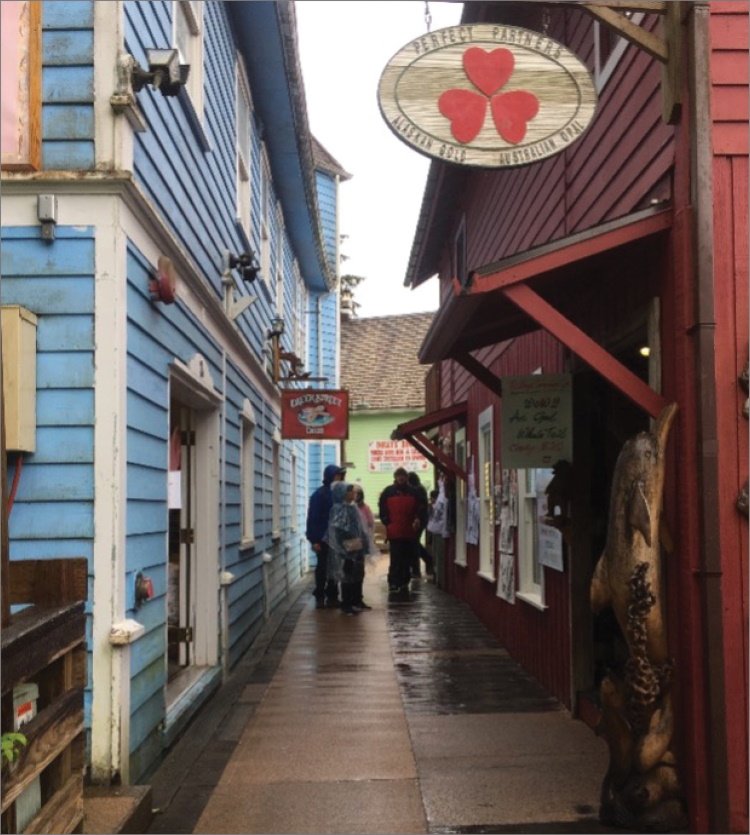 The Guidebook is written and designed for easy access, including callouts and sidebars with illuminating statistics and examples. Chapters are dedicated to specific topics including the downtown economy, housing, transportation, and form and placemaking. Each chapter addresses:
The Guidebook is written and designed for easy access, including callouts and sidebars with illuminating statistics and examples. Chapters are dedicated to specific topics including the downtown economy, housing, transportation, and form and placemaking. Each chapter addresses:
- The role of downtowns;
- Key issues, considerations, and opportunities;
- Best practices, lessons learned, and successful approaches; and
- An implementation guide.
Economy
Downtowns and business districts are commercial hubs of our communities. They are places where sales are generated, and jobs are created. Downtowns contribute to the quality of life for residents, workers, and visitors. This chapter highlights the importance of downtowns to a city's local economy and further describes how downtowns:
- Have an outsized impact on a city's tax revenue,
- Have significant multiplier effects throughout the city's economy, and
- Are important for small business growth.
- Case Studies:
Independence,
Coos Bay
Housing
Downtowns are critical to diversifying the types of local housing options that support affordability and choice. This chapter highlights the importance of downtowns in meeting cities' housing needs and describes how downtown housing:
- Creates an active, vibrant community district that includes not only office workers and shoppers but permanent residents;
- creates a downtown market for retail, amenities, and commercial services;
- attracts and retains a qualified workforce as the convenience of downtown living appeals to those working nearby;
- increases options for residents, particularly for rental and affordable units;
- adds to the quality of life in downtown and the community;
- enhances public safety with more eyes and ears paying attention to activity and adding people to the street during evening hours;
- supports non-auto forms of transportation
- Case Studies:
Astoria,
Cornelius
Transportation
A safe, connected, and accessible transportation system is fundamental to downtown development, land use, economy, and character. This chapter highlights the importance of the transportation system in downtowns and further describes how downtowns:
- Prioritize people walking, biking, and taking transit while also accommodating carspeople driving;
- Can better manage the use of public rights-of-way, parking areas, and supporting infrastructure;
- Can provide a street network that is welcoming and supports ive of the local economy; and
- Contribute to an interconnected, healthy, and vibrant community.
- Case Studies:
Klamath Falls,
Ashland
Activation
As the economic, social, and cultural hubs of most small cities, downtowns should be dynamic places where people feel connected and welcomed to explore and enjoy. This chapter explores several aspects of placemaking and the way that downtowns can use design and programming to:
- Foster civic pride;
- Enable social connections;
- Support small, local businesses and artists;
- Attract families, visitors, and residents;
- Encourage walking, and;
- Improve public safety.
- Case Studies:
Independence,
McMinnville
Inspiring Action and Implementation
Great streets, thriving businesses, and popular public spaces take effort, time, vision, and leadership. Vibrant Oregon Downtown's identifies basic steps and considerations that can help turn inspiration into action.
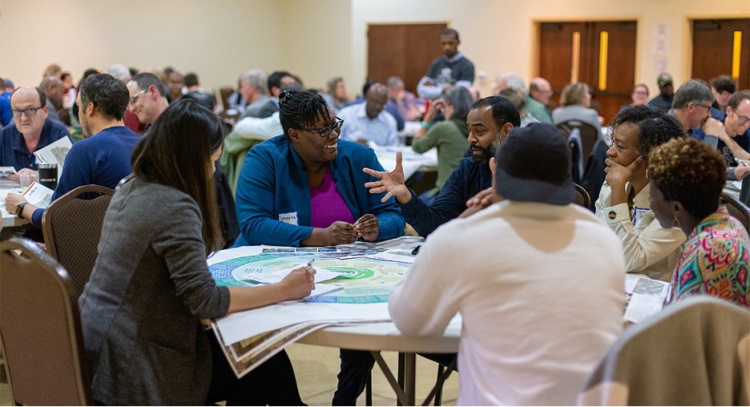
- Engage Downtown "Communities": Changes can affect different community members in different ways. Initiatives should start with an understanding of potential audiences, partners, and stakeholders.
- Define the Vision: Successful ideas for a downtown start with an envisioned outcome and organized effort.
- Create an Action Plan: Advancing new initiatives requires a shared vision and strategic leadership.
- Measure Success and Celebrate Results: Organizers, project champions, and the broader community need ways to know about progress towards the vision.